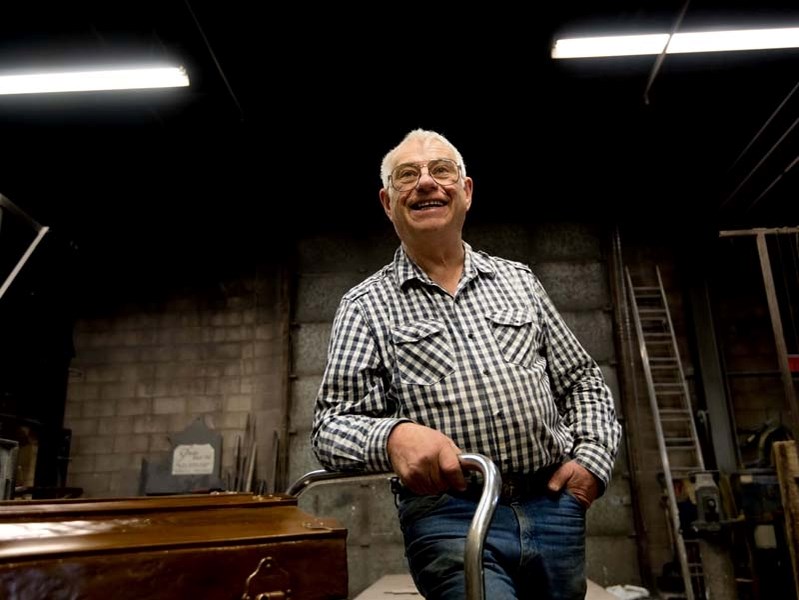Don Begg is getting ready to load up his latest 2,000-pound creation and drive it more than 300 kilometres north to Fort Saskatchewan for an unveiling ceremony next week.
While the intricate four-person family sculpture – representing the immigration experience in Canada at the turn of the century – carries with it his own blood, sweat and tears in the making, this time, the piece also contains a nod to his own family history.
“The trunk that I have … it came over here in the 1800s,” Begg said of the original steamer trunk he used as inspiration to craft a similar one in bronze that now forms an integral part of the Acres of Dreams commemorative piece.
“It’s in excellent shape,” added Begg’s daughter Karen of the travel case, adding it belonged to her great grandmother’s parents. “There’s nothing like being able to copy from a real item.”
Drawing from historical reference is a critical step in the creative process for the Beggs, who have cast more than 120 depictions of life in Canada and around the world over the 34 years since they opened Canada’s first bronze foundry in Cochrane.
Don, his wife, Shirley, Karen and a small staff rely on researchers, historians, books and more both to inspire and to correctly represent the story they’re telling through their art. They’ve even amassed a vast collection of period clothing and accessories that date back to the mid-1800s.
“I’ve got bowler hats, top hats, opera hats… dickeys, collars, cuffs…,” listed Begg, adding he will often dress models in the clothes to examine how they looked in real life before beginning his sculptures.
With the Acres of Dreams piece, an immigrant family of four from approximately 1910 stands hopefully on a train platform – dressed in their Sunday best, including mom’s ornate flowered hat, dad’s crisp suit and pocket watch and the young daughter’s unique buttoned boots.
“Don had these in his collection for a while and … they’re just perfect for this one,” said Karen of the fancy footwear.
Begg said he wanted to present the immigrant experience in a hopeful light and represent the many more well-to-do families that came over from Europe to begin a new life – not just the hard-luck poor that Canadians often hear about.
“People always think about immigrants coming and they’re very poor. Some were wealthy: doctors, dentists,” said Begg. “Everybody contributes to make a good community.”
Begg will be on hand when the Acres of Dreams statue is unveiled on June 15 in Fort Saskatchewan’s Legacy Park. The $220,000 project was created in part with a $105,000 grant for Canada’s 150th birthday celebrations, and the name calls back to the 160 acres immigrants were gifted upon their arrival in the country.
As for the steamer trunk, Begg said he can already envision children climbing all over the piece and people plunking down on its lid to pose for photos. And he wouldn’t have it any other way.
“If you wanted to sit on the trunk, you could do that,” he said. “People take possession of it.”




